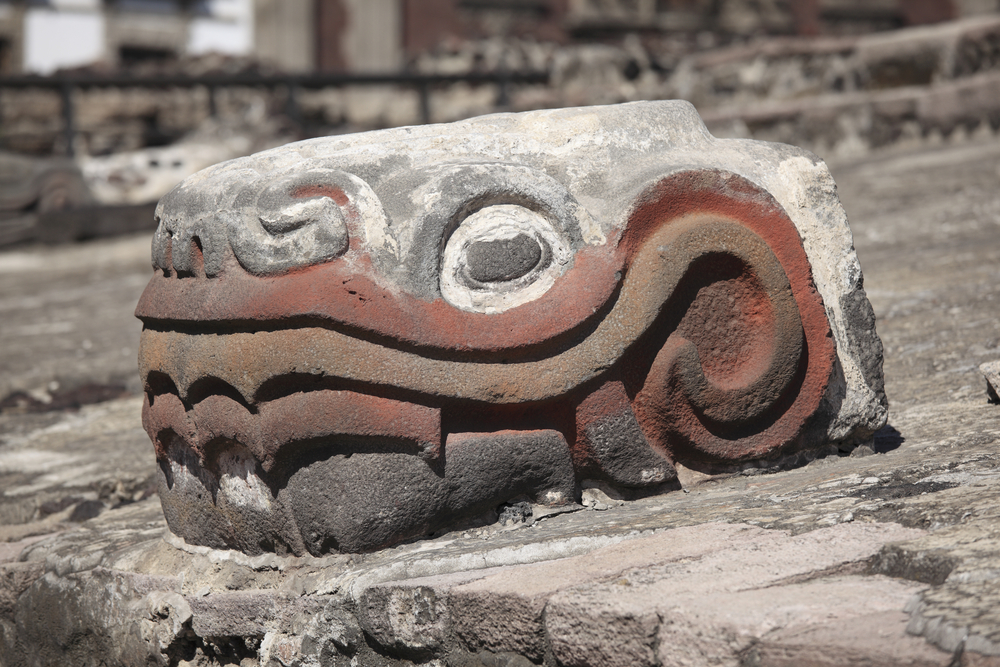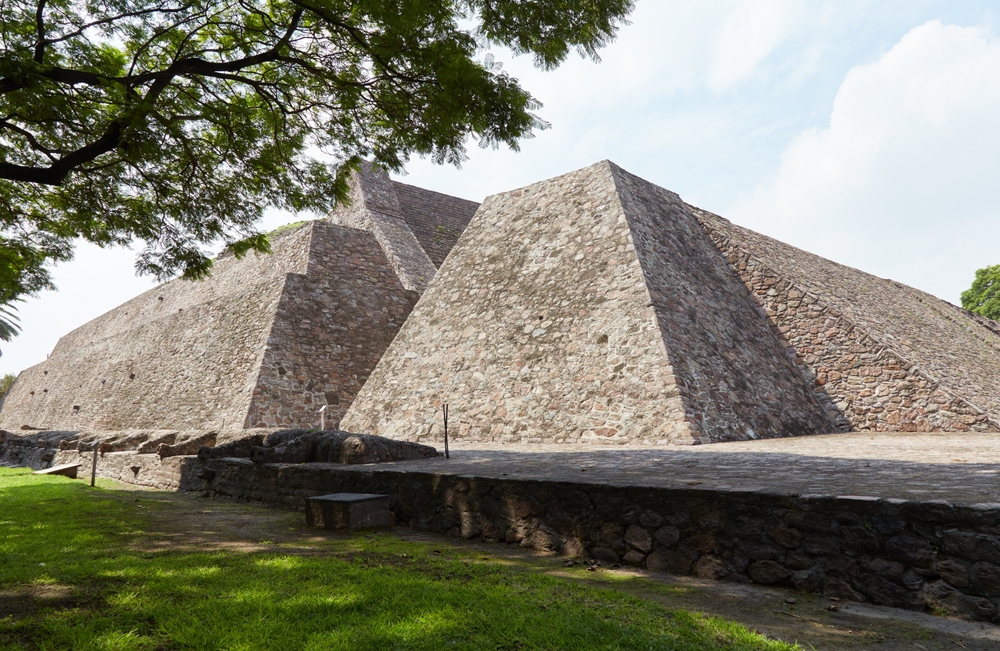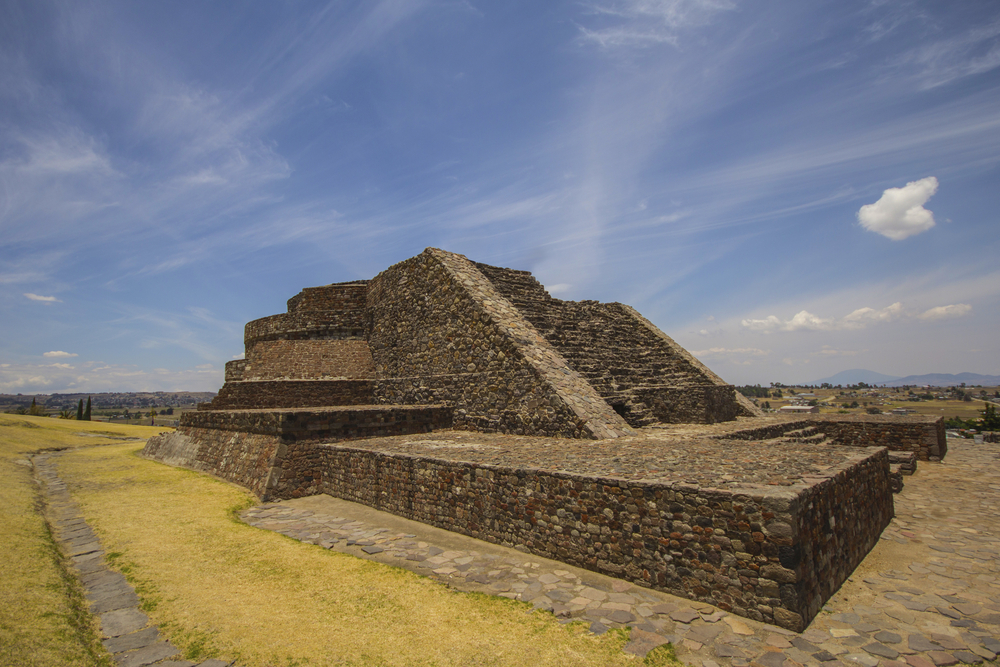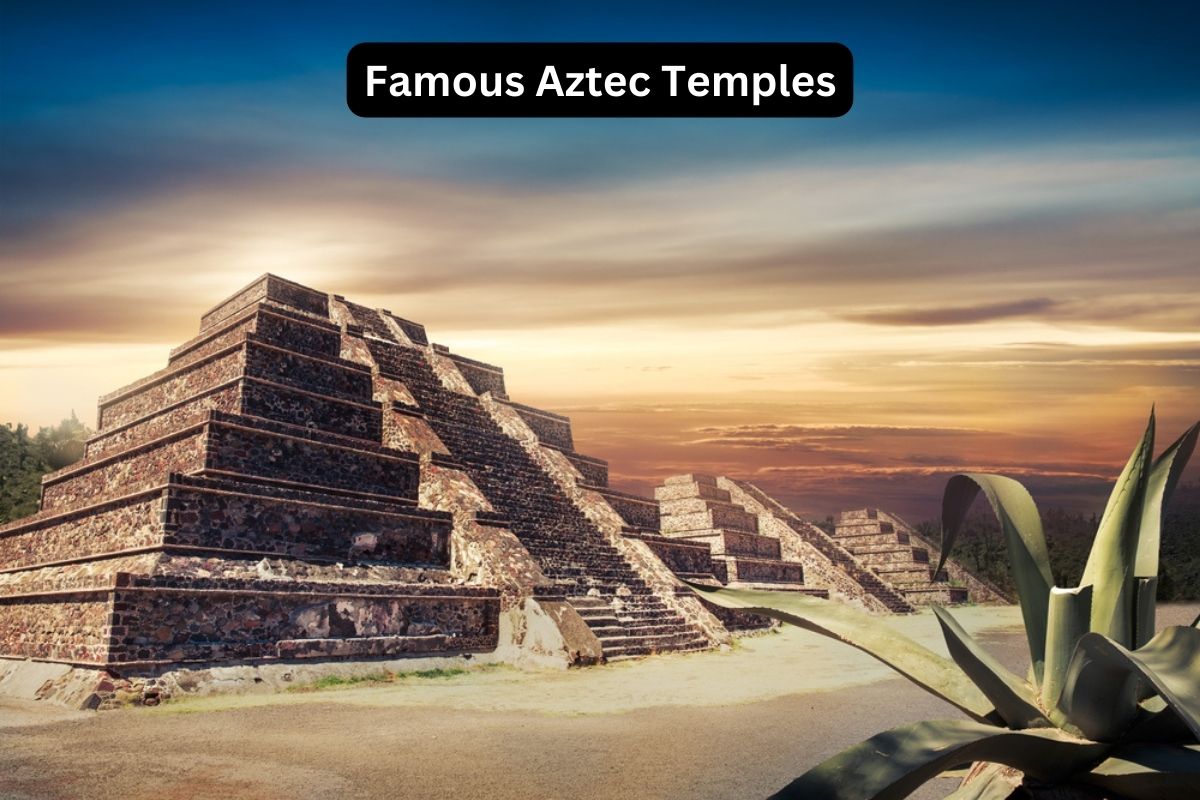Explore the fascinating world of the Aztec civilization through its iconic temples and religious centers.
The Aztecs, who thrived in Mesoamerica from the 14th to the 16th centuries, left behind a rich architectural and cultural legacy, with temples that served as both sacred places of worship and powerful symbols of their society.
In this article, we will journey through history to discover some of the most famous Aztec temples, each with its own unique significance, architecture, and role in the Aztec religious and ceremonial life
Famous Aztec Temples
1. Templo Mayor (Great Temple)

Situated in Tenochtitlan (modern-day Mexico City)
The Templo Mayor was the central and most important religious structure in the Aztec capital of Tenochtitlan. It was dedicated to two major Aztec deities, Huitzilopochtli (the god of war and the sun) and Tlaloc (the god of rain and agriculture).
Also Read: Famous Aztec Leaders
These dual deities reflected the Aztec’s reverence for both the military and agricultural aspects of their society.
The Templo Mayor consisted of twin pyramids, one dedicated to Huitzilopochtli and the other to Tlaloc. These pyramids were periodically expanded and rebuilt to emphasize the power and wealth of the Aztec Empire.
The entire complex included various structures, altars, and sculptures, making it the religious heart of the city.
2. Templo de Tlaloc

Part of the Templo Mayor complex in Tenochtitlan.
This temple was dedicated to Tlaloc, the god of rain and fertility. Tlaloc played a crucial role in agricultural prosperity, and his temple was essential for rituals and ceremonies to ensure bountiful harvests. Worship of Tlaloc was vital to the survival of the Aztec people.
Also Read: Mayan Leaders
The Templo de Tlaloc was characterized by its four massive staircases adorned with sculptures of Tlaloc’s face, representing rain and water. These staircases led to a shrine at the summit where religious offerings and ceremonies took place.
3. Templo de Quetzalcoatl

Also part of the Templo Mayor complex in Tenochtitlan.
This temple was dedicated to Quetzalcoatl, the feathered serpent god, who was associated with creation, wisdom, and culture. Quetzalcoatl was one of the most revered deities in the Aztec pantheon and played a vital role in shaping their mythology and religious beliefs.
The Templo de Quetzalcoatl featured intricate stone carvings and sculptures, including representations of the feathered serpent deity.
The temple’s architecture was characterized by stepped pyramids and ornate decorations, reflecting the Aztec’s dedication to their gods and their craftsmanship.
4. Templo de Huitzilopochtli

Situated in part of the Templo Mayor complex in Tenochtitlan.
This temple was dedicated to Huitzilopochtli, the Aztec god of war, the sun, and human sacrifice. Huitzilopochtli was the patron deity of the Aztec people and played a central role in their religious beliefs and military endeavors.
The Templo de Huitzilopochtli was a grand pyramid with a staircase leading to the top, where an altar stood for ceremonial offerings and human sacrifices. The temple was adorned with sculptures and symbols related to warfare, emphasizing the god’s connection to battle and victory.
5. Templo de Xochicalco

Situated in Xochicalco, an ancient city in modern-day Morelos, Mexico.
Xochicalco was a prominent archaeological site that included a temple complex. This site is renowned for its astronomical and architectural features, which suggest the importance of astronomy and calendar calculations in the lives of the Aztecs.
The Templo de Xochicalco featured an astronomical observatory known as the “Edificio de las Estelas,” which was used to track celestial events. The site also had pyramidal structures with intricate carvings, depicting mythological scenes and historical events.
6. Templo de Tenayuca

Situated in Tenayuca, a town located in the Valley of Mexico.
The Templo de Tenayuca was dedicated to the god Tezcatlipoca, who was considered a powerful deity associated with sorcery, obsidian, and the night sky. This temple complex was significant in the religious and ceremonial life of the Aztec people in the region.
The temple complex in Tenayuca featured various pyramidal structures and platforms, often decorated with intricate carvings and sculptures.
It served as a center for rituals and offerings to honor Tezcatlipoca and other deities, reflecting the religious diversity and practices within the Aztec Empire.
7. Templo de Tonantzintla

The Templo de Tonantzintla is situated in Cholula, Puebla, a region known for its ancient Mesoamerican heritage.
This temple is part of a larger complex in Cholula, which is famous for its massive pyramid, Tlachihualtepetl. The complex was dedicated to various deities and had great cultural and religious significance.
The Templo de Tonantzintla is notable for its intricate architectural details and decoration, featuring richly adorned facades with motifs related to the Aztec worldview. The temple complex highlights the blending of indigenous and colonial influences in its design.
8. Templo de Ehécatl (Temple of the Wind)

This temple is located in the archaeological site of Tlatelolco, which was an independent urban center in the Valley of Mexico, distinct from Tenochtitlan.
The Templo de Ehécatl was dedicated to the god Ehécatl-Quetzalcoatl, who represented the wind and the feathered serpent deity, Quetzalcoatl. This temple was essential in the religious life of the people of Tlatelolco.
The temple featured a circular platform with a central altar where ceremonies and offerings took place. It was a distinct architectural style compared to the more common pyramidal structures found in Aztec temples.
9. Templo de Tepozteco

The Templo de Tepozteco is perched atop the Tepozteco Mountain, overlooking the town of Tepoztlán in the state of Morelos, Mexico.
This temple was dedicated to the god Tepoztecatl, a deity associated with fertility, pulque (a fermented alcoholic beverage), and the arts. The temple site offers breathtaking panoramic views of the surrounding landscape.
To reach the temple, pilgrims and visitors had to climb a steep stone staircase that led to the summit. The temple itself was a relatively small structure with a shrine, and it was a place of worship and pilgrimage for the local inhabitants.
10. Templo de Teopanzolco

The Templo de Teopanzolco is located in the archaeological site of Xochicalco, which is situated in the state of Morelos, Mexico.
Xochicalco was a major center for trade, culture, and religious activities, and the Templo de Teopanzolco was one of its notable structures. The site reflects a blend of different Mesoamerican cultures and architectural styles.
The temple complex at Xochicalco featured pyramidal structures and other ceremonial buildings. It served various religious and ceremonial functions, highlighting the cultural diversity and influences present in the region.
